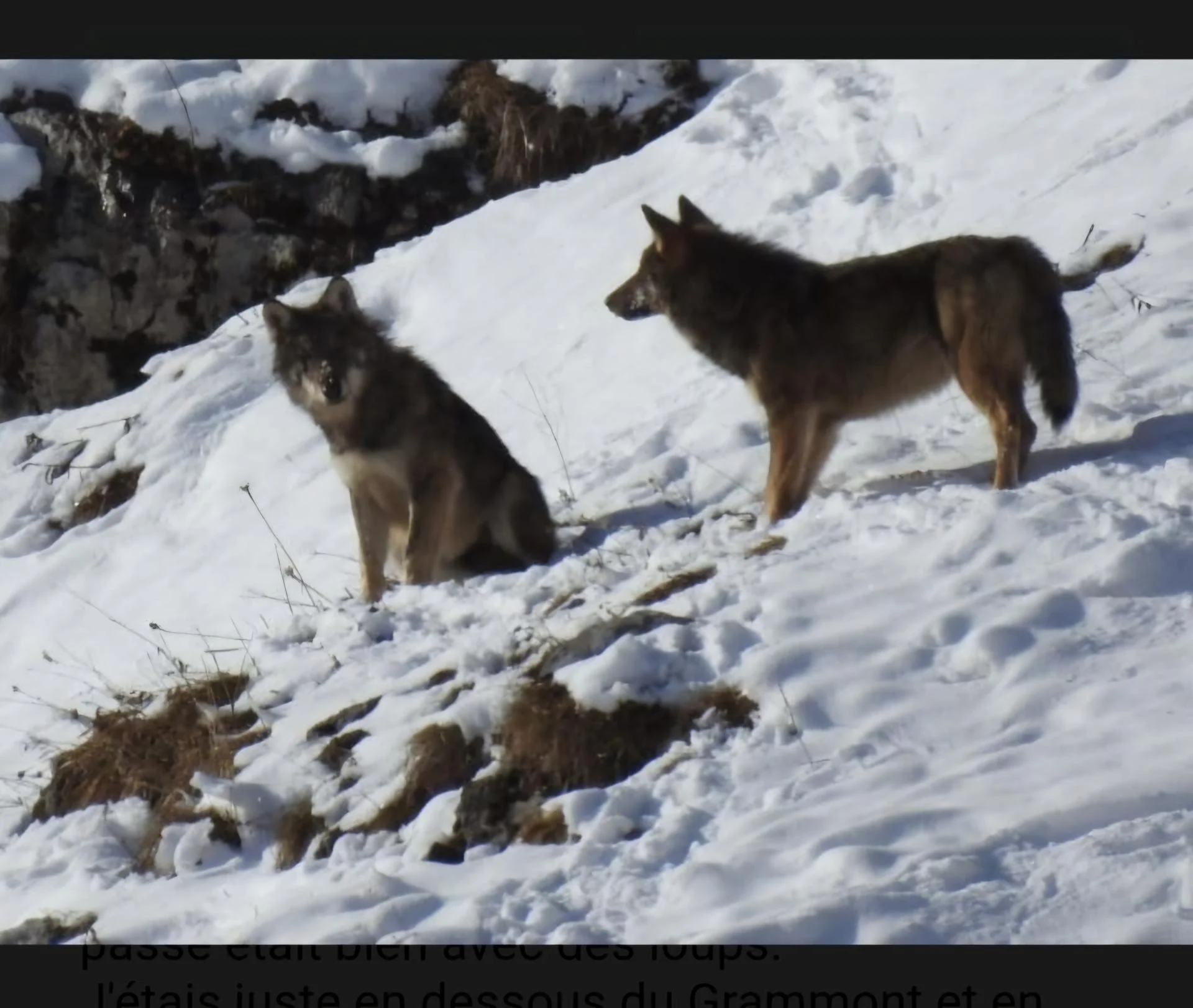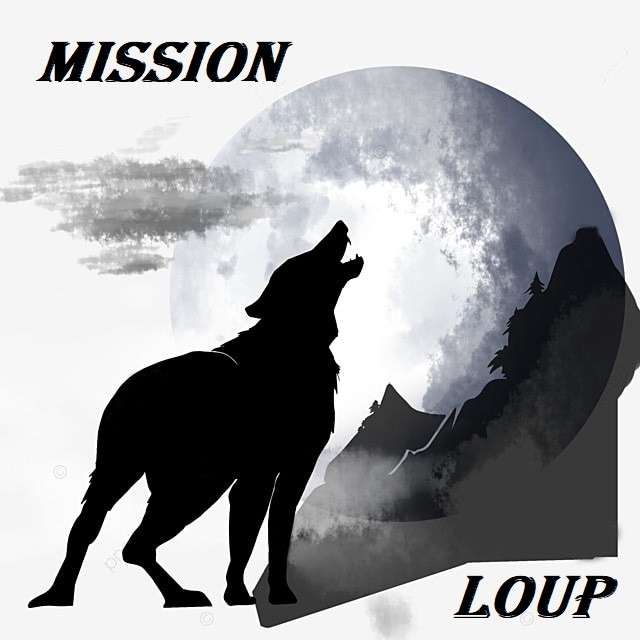
The Chablais pack has never been particularly predatory when it comes to livestock. It was nowhere near as successful as other packs such as Augstbord or Nanz, where, incidentally, herd protection remains largely imperfect and often unchanged. In 2023 and 2024, 99% of attacks in protected situations took place on herds protected only by fences, without dogs or shepherds and with daily checks at most – and this has been the case for several years (1).
Between 2019 and 2023, in its five years of existence, the Chablais pack never reached the threshold of eight victims in protected situations (or on unprotected pastures—another aberration that has not changed), which would have allowed for a reactive cull to be requested in accordance with the law (LChP/OChP). During all these years, no authorization was requested: clear proof that this pack had not developed any habituation to herds.
In 2023, it had not committed any attacks in France. A French farmer, whose summer pasture is located between two packs and who wanted to evolve his protection methods (dogs, fences, shepherd), even criticized us during a discussion when the candidates for regulation were announced, calling it a “totally incomprehensible and stupid decision,” as the Chablais pack had caused few problems so far. And we cannot disagree with him, quite the contrary. He understood what the authorities, politicians, and opponents in Valais (and Switzerland) still fail to grasp: the need to preserve packs that are stable, well established, and have not adopted undesirable behaviors toward protection measures or created habituation! As the proverb says, “If you want too much, you lose everything!”
Incomprehensible regulation
In December 2023, despite this stable history, the Chablais pack was included in the proactive regulation. We were very surprised, even angry, as the situation was incomprehensible, both scientifically and factually speaking. The logic of the cantonal authorities seemed clear to us: to reduce the number of packs, regardless of their actual behavior. In fact, that is exactly what happened.
The Hunting Service then announced that it wanted to regulate 7 out of 13 packs. The problem is that this total figure was wrong! Here are the two reasons that led to this erroneous assessment:
* One pack had been counted twice (Nendaz-Siviez and Fou-Isérables shared the same breeding pair, M246 & F136).
* Cross-border packs had not been counted as half, contrary to the recommendations of the Federal Office for the Environment (FOEN).
In reality, there were 9.5 packs, not 13. Killing 7 out of 13 packs does not have the same impact as killing 7 out of 9.5. This was a serious miscalculation, which highlights shortcomings in monitoring, management, and communication.
The loss of a stable breeding male
Between December 2023 and January 2024, only one wolf from the pack was killed: the breeding male, M88. Given the relatively short time between his death (January 5, 2024) and the breeding season, the consequence was predictable: no litters were born in 2024. The breeding female, F43, did not have time to find a new partner but stayed with her young, sub-adults, and 2023 pups. She was spotted with six other members in the spring of 2024 in France, then, at the end of autumn, she was accompanied by only two other wolves, as dispersal had played its natural role.
The M88 & F43 pair had been stable for years. The cohesion between these two founding members would have ensured several more seasons without too much pressure. But the disappearance of the male paved the way for the arrival of a new suitor, through dispersal. We can never know anything in advance about this new individual in terms of personality/character, experiences and lessons learned (positive and negative), education, or whether or not they have problematic driving patterns, etc. Very often, the replacements for deceased breeding members are younger and less experienced, the result of dispersal, with its share of experiences along the way. In the case of stable packs with a balanced, calm male, there is a very strong chance that his successor will prove to be significantly more problematic.
And we had announced publicly that intervening in a stable pack risked opening the door to chaos and leading to a new wave of attacks on livestock.
A sharp increase in predation
Unfortunately, reality soon confirmed our fears. The new breeding male of the Chablais pack exerted significantly greater pressure on local herds in the summer of 2025, with numerous attacks, including on calves. As of September 3, 2025, the Chablais pack had already preyed on 23 victims in protected areas—three times more than its annual predation rate during its first five years of existence. Official data indicates 21 cases on the interactive map, and these unexplained discrepancies between databases do not help to build trust.
An escalation of conflicts
Today, the Chablais pack has once again been placed on the proactive regulation list, with plans for its total eradication. Although the conditions appear to have been met (prior to consultation of the regulation application file), we would like to be very clear: the consequences observed are directly linked to the choices made by the cantonal authorities, who bear full responsibility! By intervening indiscriminately in stable packs that are not particularly prone to preying on livestock, they are exacerbating the problems they claim to be solving. The goal they set out in their latest press release is to reduce conflicts in problematic areas. It is clear that by attacking packs that are under control, having killed fewer than eight victims per year in protected areas (and never exceeding reactive regulation quotas for most of them), or even by killing wolf cubs belonging to such packs, they are moving completely away from this objective, not to say that they are going in the opposite direction.
In addition to changes within stable breeding pairs, with the consequences that this could entail, ill-considered interventions, without hindsight or analysis, cause another type of problem. In 2025, numerous attacks attributed, according to the canton, to lone wolves have already been reported. These dispersals are also a direct consequence of the breakdown of packs. Conflicts are multiplying not only in the territory concerned, but also in neighboring areas. In fact, two wolves labeled as solitary by the authorities killed 111 sheep in a few weeks, in areas close to the Nanz and Augstbord packs.
An inconsistent method
The case of the Chablais pack is not an isolated one. Stable packs such as those in Simplon (three losses in protected areas in two years), Les Posettes (one loss in two years), Nendaz-Isérables (4 losses in protected areas in two years + 1 calf less than 14 days old) and Anniviers-Réchy (one attack in a protected area in four years, defects found in the fence) are also being targeted. However, it is precisely these balanced packs—with predation focused mainly on wildlife—that should be preserved to ensure natural regulation and limit conflicts. During the second phase of regulation, packs were even targeted for a single loss in a protected situation during the year (Hérens-Mandelon, Les Toules & Nendaz-Isérables), an aberration that could lead to future chaos.
But the authorities seem determined to cull indiscriminately, including cubs in packs that cause little or no problems and are more focused on wild prey than domestic animals. And it is precisely these young animals, from stable bloodlines, that it is important not to eliminate, with a view to replacing lost breeders or reclaiming vacated territories. Let's not kid ourselves: wolf numbers will not fall with regulation practiced in this way, so there will always be places to fill, dispersals and new packs that will occupy new or vacated territories. Such a lack of assessment of the medium/long-term consequences is quite distressing and reflects a policy that is far too prevalent in decision-making, while science seems to be conspicuous by its absence. It is becoming clear that the solutions are unlikely to be effective and could create new problems.
What is the solution?
In the case of the Chablais pack, however, there is a scientific and targeted approach: identifying and neutralizing the problematic individual—in this case, the new breeding male—rather than eliminating the entire pack. The evidence is there to understand how to act appropriately without aggravating the situation.
Because the reality (not to be confused with the truth) is simple and must be taken into account: a stable pack is never free of losses (3 to 7 victims per year on average), but it limits the escalation of conflicts. It is unstable packs, or lone wolves resulting from dispersal (including forced dispersal), that cause much greater damage. It is therefore urgent to understand that zero losses will never happen again (just like zero shooting). Maintaining low-conflict packs, whose low predation affects different farms (i.e., a maximum of 2-3 losses per year), is a better solution than trying to change everything, destabilize, and free up territories without assessing the possible consequences. Like a game of chess, it is necessary to think about the next moves and all the possibilities.
Conclusion
Regulation as it is carried out in Valais does not meet its stated objective, which masks the real political intentions, which nevertheless can be seen through the decisions taken. By attacking stable, low-predatory packs, the authorities are creating new tensions, which are likely to lead to an increase in predation on livestock and also undermine coexistence. When they realize that losses are not decreasing, but rather increasing, the temptation (which in Valais will quickly turn into intention) will be to shoot even more, which is a headlong rush that will further aggravate the situation.
Preserving balanced packs, genuinely improving herd protection (dogs, shepherds, suitable fencing), ensuring its development (urgently implementing guard dog programs, studying various measures or new methods, etc.) and targeting truly problematic individuals: this is the only way to achieve a lasting solution.
“To the Chablais pack: we are sorry for this negative turn of events, which was predictable and should never have happened.
We hope you will find refuge in France, where monitoring will continue to ensure that everything goes well.”
(1) Wolf management in Valais: initial assessment, risks, and areas for improvement (french) - Arlettaz Raphaël & Germanier Isabelle 2025 (english version available upon request)
Article : Team Wolf Mission
Photos : I. Defawes



